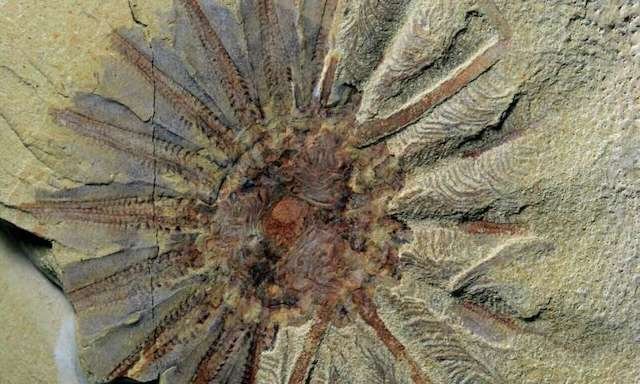
In a new study, researchers discover a half-a-billion-year-old fossil. The new fossil shows comb jellies have a strong resemblance with other sea-floor dwelling creatures.
The discovery provides important information about the origins of the animal.
The research was conducted by researchers from the University of Bristol, Yunnan University in China and London’s Natural History Museum.
Comb jellies live in marine waters worldwide.
They are notable for the groups of cilia they use for swimming, and they are the largest animals to swim with the help of cilia.
Researchers suggest that comb jellies occupy a pivotal place in the history of animal evolution, and the new finding put it in a new place in the evolutionary tree of life.
In the study, the team found the 520 million-year-old fossil in outcrops south of Kunming in the Yunnan Province, South China. It set in a yellow and olive colored mudstone and resembling a flower.
The fossil showed a cup-shaped organism with 18 tentacles surrounding its mouth. On the tentacles are fine feather-like branches on which rows of ciliary hairs preserved.
It has been named Daihua after the Dai tribe in Yunnan and the Mandarin word for flower ‘Hua’.
The researchers noticed that Daihua resembled another fossil. That is a famous one from the Burgess Shale (508 million years old) called Dinomischus.
In that fossil, the animal also had 18 tentacles and an organic skeleton and was previously assigned to a group called entoprocts.
They compared the two fossils and found that both evolved from the same ancestors. This means comb jellies are related to ancestors that sat on the sea floor with polyp-like tentacles.
The researchers suggest that comb jellies evolved from ancestors with an organic skeleton, which some still possessed and swam with during the Cambrian.
It is possible that their mouths then expanded into balloon-like spheres.
Their original body also reduced in size so that the tentacles that used to surround the mouth now emerges from the back-end of the animal.
The findings may explain why the animals have lost so many genes and possess a morphology that scientists see in other animals.
The researchers believe their findings show evidence that comb jelly should be put back alongside corals, sea anemones and jellyfish.
One author of the study is Professor Hou Xianguang.
The study is published in Current Biology.
Copyright © 2019 Knowridge Science Report. All rights reserved.



